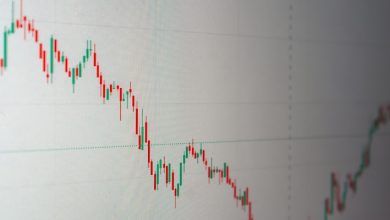How to Use Stop-Loss Orders to Minimize Trading Risks

- Understanding stop-loss orders and their importance in trading
- Setting the right stop-loss level for your trades
- Implementing stop-loss orders effectively in your trading strategy
- Avoiding emotional decision-making with the help of stop-loss orders
- Maximizing profits and minimizing losses with stop-loss orders
- Common mistakes to avoid when using stop-loss orders
Understanding stop-loss orders and their importance in trading
Stop-loss orders are an essential tool in trading that helps minimize risks and protect traders from significant losses. When placing a stop-loss order, traders specify a price at which they are willing to sell a security to prevent further losses beyond a certain point.
By using stop-loss orders, traders can set predefined exit points for their trades, allowing them to manage their risk effectively. This risk management strategy is crucial in volatile markets where prices can fluctuate rapidly.
Understanding stop-loss orders and their importance in trading is key to successful risk management. It allows traders to maintain discipline and avoid emotional decision-making when prices are moving against their positions.
Implementing stop-loss orders in trading can help traders stay focused on their trading plan and avoid the temptation to hold onto losing positions in the hope that prices will reverse. This disciplined approach can lead to more consistent and profitable trading outcomes.
Setting the right stop-loss level for your trades
Setting the appropriate stop-loss level for your trades is crucial to managing your trading risks effectively. It is important to carefully consider various factors when determining where to place your stop-loss orders.
One key factor to consider is the volatility of the market. More volatile markets may require a wider stop-loss level to account for larger price fluctuations. On the other hand, less volatile markets may allow for a tighter stop-loss level.
Another factor to consider is the timeframe of your trades. Short-term trades may require a tighter stop-loss level to protect against quick price movements, while longer-term trades may benefit from a wider stop-loss level to allow for more flexibility.
Additionally, it is important to consider the level of support and resistance in the market. Placing your stop-loss level just below a key support level or above a resistance level can help protect your trades from significant losses.
Overall, setting the right stop-loss level for your trades requires careful analysis of market conditions, volatility, timeframe, and support/resistance levels. By taking these factors into account, you can minimize your trading risks and improve your overall trading performance.
Implementing stop-loss orders effectively in your trading strategy
Implementing stop-loss orders effectively in your trading strategy is crucial for minimizing risks and protecting your investments. These orders act as a safety net by automatically selling a security when it reaches a certain price, preventing further losses. To use stop-loss orders successfully, consider the following tips:
- Set your stop-loss order at a reasonable level based on your risk tolerance and market conditions. Avoid setting it too close to the current price, as this may trigger unnecessary sales due to market volatility.
- Regularly review and adjust your stop-loss orders as the market fluctuates. This will help you adapt to changing conditions and protect your gains.
- Combine stop-loss orders with other risk management techniques, such as diversification and proper position sizing, to create a comprehensive trading strategy.
- Stick to your stop-loss orders and resist the temptation to override them based on emotions or short-term market movements. Discipline is key to successful trading.
By incorporating stop-loss orders into your trading strategy and following these best practices, you can minimize your risks and improve your overall trading performance. Remember that while stop-loss orders cannot guarantee profits, they can help you control losses and protect your capital in the unpredictable world of trading.
Avoiding emotional decision-making with the help of stop-loss orders
One of the major benefits of using stop-loss orders is that they can help traders avoid making emotional decisions during volatile market conditions. When prices are fluctuating rapidly, it can be easy to get caught up in the moment and make impulsive decisions that are not based on sound analysis. By setting a stop-loss order, traders can establish a predetermined exit point for a trade, which helps take the emotion out of the decision-making process.
Maximizing profits and minimizing losses with stop-loss orders
One effective strategy for traders to consider when looking to manage risks in their trades is to utilize stop-loss orders. These orders allow traders to set a predetermined price level at which they are willing to exit a trade in order to minimize potential losses. By using stop-loss orders effectively, traders can protect their profits and limit their losses in volatile market conditions.
When setting stop-loss orders, it is important for traders to consider both their risk tolerance and the potential for price fluctuations in the market. By setting stop-loss orders at strategic levels, traders can maximize their profits by locking in gains when prices reach predetermined targets. At the same time, stop-loss orders help traders avoid emotional decision-making by automatically triggering an exit from a trade when prices move against them.
One key benefit of using stop-loss orders is that they allow traders to protect their capital and preserve their trading accounts in the face of unexpected market movements. By setting stop-loss orders at appropriate levels, traders can minimize their losses and avoid significant drawdowns in their trading accounts. This risk management strategy helps traders maintain a disciplined approach to trading and reduces the impact of emotional decision-making on their overall trading performance.
In conclusion, utilizing stop-loss orders is a valuable tool for traders looking to maximize their profits and minimize their losses in the financial markets. By setting stop-loss orders at strategic levels, traders can protect their capital and preserve their trading accounts in the face of market uncertainty. This risk management strategy helps traders maintain a disciplined approach to trading and avoid emotional decision-making that can lead to significant losses.
Common mistakes to avoid when using stop-loss orders
When using stop-loss orders, there are several common mistakes that traders should avoid to minimize potential risks and losses in their trading activities.
- Setting stop-loss orders too close to the current price of the asset can result in premature triggering of the order, leading to missed opportunities for the trade to recover and turn profitable.
- Conversely, placing stop-loss orders too far from the entry point can expose traders to larger losses if the market moves against their position before the stop-loss is triggered.
- Not adjusting stop-loss orders as the trade progresses can also be a mistake. Traders should regularly review and update their stop-loss levels based on market conditions and price movements.
- Relying solely on stop-loss orders without implementing other risk management strategies, such as position sizing or diversification, can leave traders vulnerable to unexpected market volatility and price fluctuations.
- Lastly, failing to consider external factors, such as news events or economic data releases, that could impact the market and trigger stop-loss orders unexpectedly is another common mistake to avoid.
By being mindful of these common mistakes and taking proactive measures to address them, traders can effectively use stop-loss orders to manage risks and protect their trading capital in the financial markets.



